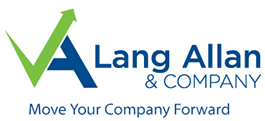Cash flow is the lifeblood of any business, and accurate forecasting and management are crucial for long-term success. While it’s a challenge for all companies, those with complex or volatile revenue streams face additional obstacles.
“Complex and volatile revenue streams can arise from various factors, such as seasonality, market fluctuations, project-based income, or multiple product lines,” informs, Adam Allan, CPA and managing partner at Lang Allan & Company, P.C.
Let’s explore effective strategies and best practices for managing and forecasting cash flows in several scenarios.
Understanding Complex and Volatile Revenue Streams
Companies operating in sectors like hospitality, tourism, or technology often experience these challenges. For instance, a software company may have different revenue sources, such as software licenses, maintenance contracts, and consulting services, each with its own pattern and timing. It becomes imperative for such businesses to develop a robust cash flow management system that can adapt to these intricacies.
The Importance of Accurate Cash Flow Forecasting
Accurate cash flow forecasting provides businesses with a clear understanding of their financial health, allowing them to make informed decisions, plan for growth, and navigate periods of uncertainty. For companies with complex or volatile revenue streams, forecasting becomes even more critical. It enables proactive measures to address cash gaps, identify opportunities for cost optimization, and ensure the availability of funds to cover expenses and investments.
“A well-executed cash flow forecast helps establish a strong financial foundation, enhancing a company’s resilience and ability to thrive in challenging environments,” Allan adds.
Best Practices for Managing Cash Flows
- Implement a robust cash flow management system: Develop a comprehensive framework that captures all revenue streams, accounts for different cycles, and tracks expenses diligently. Utilize specialized cash flow management tools or software to streamline the process.
- Monitor key performance indicators (KPIs): Identify and track relevant KPIs for your industry, such as days sales outstanding (DSO), average revenue per customer, or revenue concentration. These metrics provide insights into revenue patterns, customer behavior, and potential risks.
- Maintain a cash reserve: Establish a contingency fund to cover unexpected expenses or revenue shortfalls. This buffer acts as a safety net during turbulent periods.
- Optimize working capital: Efficiently manage inventory, accounts receivable, and accounts payable. Reducing the cash conversion cycle can free up working capital and improve cash flow.
- Scenario planning: Develop multiple cash flow scenarios to anticipate various outcomes. Consider best-case, worst-case, and most-likely scenarios to identify potential risks and opportunities.
- Regularly review and revise forecasts: Monitor and update cash flow forecasts regularly, especially during periods of change or uncertainty. Adjust projections based on new data, market trends, and business developments.
Managing and forecasting cash flows accurately is paramount for businesses with complex or volatile revenue streams. By implementing robust strategies, monitoring key metrics, and optimizing working capital, companies can navigate financial challenges, seize opportunities, and ensure a strong foundation for sustainable growth.
Need Help?
If you need help implementing cash flow management processes in your company, we can help. Give us a call today.
